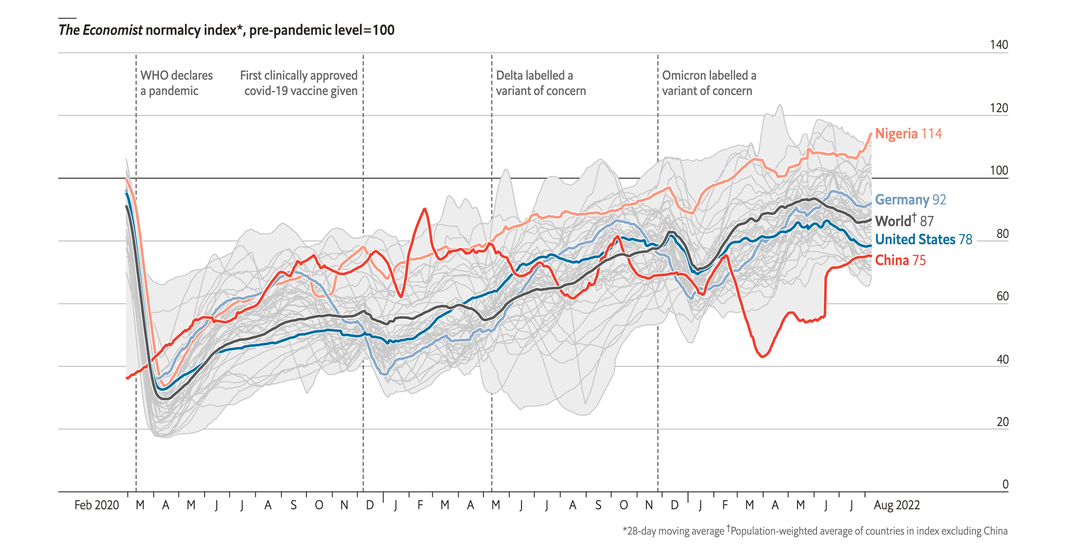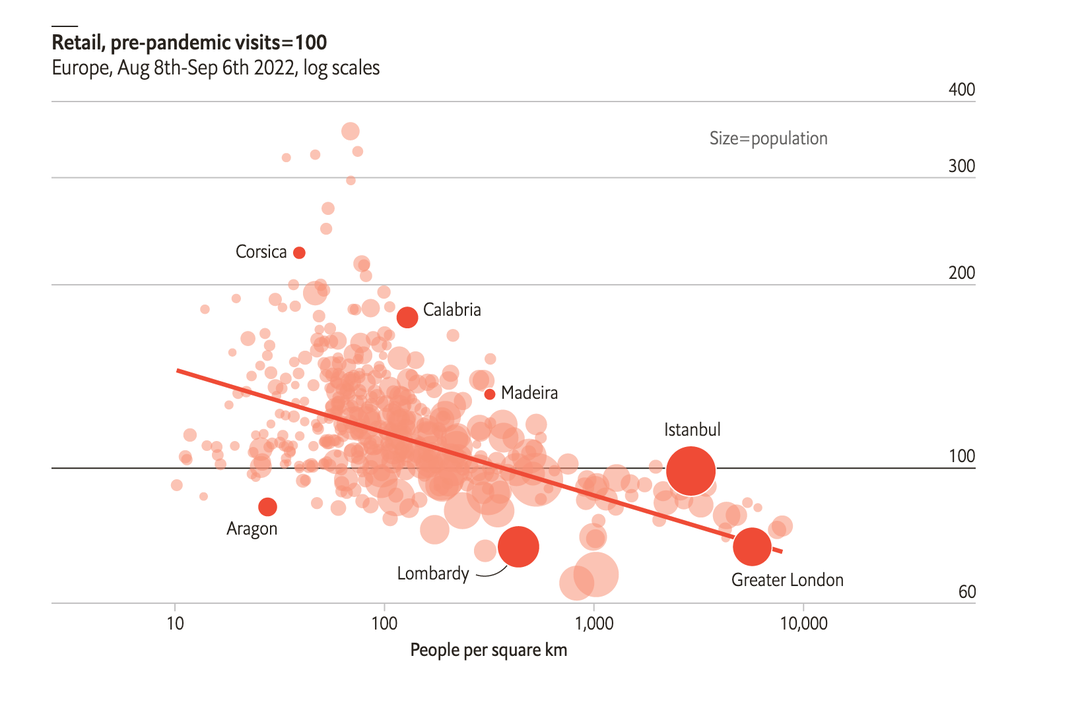

iStock-1293262418.jpg
The pandemic appears to have changed not what people do, but where they do it

In much of the world, the pandemic may be as over as it ever will be. Vaccinations, including boosters, and efforts to halt new variants or winter waves will probably continue. But China remains the only major exception to accepting sars-cov-2 as endemic. On September 1st it locked down Chengdu, a city of 21m (see China section). In other countries, governments are no longer making radical new interventions in how people live to contain this virus.
But if the new endemic normal is here, how does it compare with the world before the pandemic? The evidence so far suggests small changes in what people do, but bigger shifts in where they do it.
To track how behaviour has changed over the course of the pandemic, The Economist in 2021 devised a “global normalcy” index. Our index employs eight indicators that together track transport use, leisure time and commercial activity for 50 countries, representing 75% of the planet’s population and 90% of its gdp. The index is scaled so that 100 is equivalent to pre-pandemic levels. Worldwide, the index hit an all-time low of 34 points on April 11th 2020, during the first wave of lockdowns.
Today our index shows that activity is, by and large, almost back to where it used to be. As of mid-August, the world was at 84% of the pre-pandemic normal, summer holidays in many countries notwithstanding. That rises to 87% when China, which scores 75 points, is excluded. In eight of the 50 countries we measure, activity is now greater than it was before covid-19 arrived.

But hidden within these averages are signs of big and seemingly long-term shifts: people are moving about less, especially to stare at screens. In rich countries, offices are about a third less crowded than they were before the pandemic began—and this has not changed much since the end of last year. And whereas people have returned as spectators to professional sports, cinema box-office receipts are still down by 30% compared with 2019. Instead, more time is spent at home.
This has made cities less tightly connected to work. Data on how people move around from 25 European countries show the general trend: fewer people visit tightly packed urban centres to shop or work, but other activity is largely back to where it once was. Weekend subway passenger numbers are creeping back to pre-covid norms in cities such as London and New York, but weekdays are 30-40% quieter.

It may be that after much tragedy, a positive consequence of the pandemic will be fewer tedious and apparently inessential journeys. Less travel and more efficient use of buildings could reduce energy consumption and pollution. The new normal could have been worse.■
Comments are closed.
